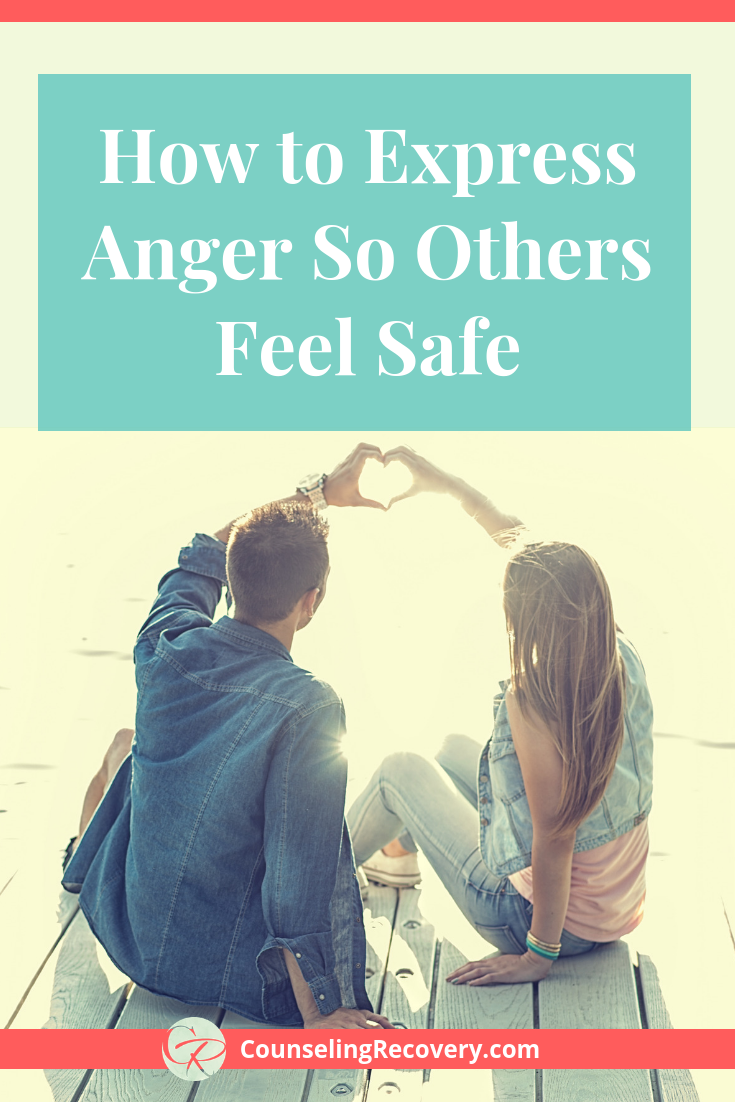How to Express Anger So Others Feel Safe
Great role-models for managing anger are, sad to say, almost nonexistent.
Most people learn how to handle (or avoid) their emotions in childhood. Because anger is still considered a negative emotion, most people try to avoid it.
In this blog, you’ll learn how to handle and express anger without pushing others away.
How Destructive Anger Starts
The struggle begins early when a child witnesses unhealthy or abusive anger.
Young children are often criticized for feeling angry instead of being taught how to deal with it effectively. As a result, they learn not to trust their own emotions.
Seeing family members rage, use the silent treatment or spew hurtful, sarcastic comments sets the stage for relationship problems as adults.
You end up mimicking the anger you grew up with or vowing to the opposite which is still destructive.
Here’s what I mean.
If you grew up with a family member who raged, anger was scary. You might have decided that stuffing your anger was a better option.
But suppressed anger creates lingering resentments that don’t heal.
Over time, ignoring how you feel develops into an indirect communication style that makes resolving conflict difficult.
Pretending Everything is Fine
On the other hand, if your caregivers denied their anger and acted like “everything was fine” you didn’t learn how to trust your own feelings. You missed the value of what healthy anger is trying to teach you.
Everyone feels angry at times.
When you perceive someone or something as dangerous, you need to act quickly to protect yourself. Anger protects you and reminds you to pay attention.
There are two reasons people typically get angry:
Your thoughts and assumptions are negative and focused on the worst case scenario.
Someone has violated your personal boundary and you feel disrespected or mistreated.
The Goal of Healthy Anger
Healthy anger is an invitation to take care of yourself.
It’s not about getting the other person to change. Instead, decide what you need to do for yourself. Sometimes, the best course of action may be to step back and do nothing or set a firm limit or better yet remove yourself from the situation.
Never underestimate the power of letting go. When it’s not your problem to solve, it can be kinder to detach with love. For more on how to detach click here.
Healthy anger allows you to express yourself without scaring anyone.
Avoid using threatening words, gestures or profanity because they will intensify the emotions. These will make a huge difference in your ability to stay in control of yourself during a conflict.
An Exercise for Keeping Anger Safe
To create safety in relationships, figure out how much physical space you (and your partner) need during an argument.
If you’ve ever had a terrible car fight, you know that awful feeling of being trapped with no where to go. Being too close in proximity when emotions are running high can escalate a situation fast.
To establish your physical boundary practice this exercise with your partner.
Stand across the room from each other with a good distance between you. Taking turns, walk towards your partner as they remain still. Stop right before you get uncomfortable. The distance where you feel safe defines your physical boundary.
To make sure each person’s boundaries are respected, whoever needs the most space gets it.
Keep Anger Short and Specific
To express anger in a nonthreatening way, keep it short.
Talking too much can escalate the anger and make it harder to stay focused. Say how you feel without making the other person feel bad or wrong. Communicate directly how you feel and let the other person know what you need.
Using effective “I statements” is the best way to communicate in a nonthreatening way. By naming the exact behavior that upsets you, you avoid blame.
Some examples:
I feel angry that you made fun of me in front of my mother.
I’m frustrated that the house is messy even though you were home all day.
When using “I statements” avoid making generalizations or judgments that ignite defensiveness. Describe what happened as a fact not a criticism and the other person is more likely to listen.
Practice Using Time-outs to Restore Trust
Knowing how and when to leave an argument can prevent the conversation from getting out of hand.
Focus on identifying one early warning sign that you’re starting to get angry. For instance, rapid heart race, muscle tension and negative thoughts are early warning signs.
If you notice that you can’t listen anymore, it’s time to take a time-out.
Click here to read more on how to take an effective time-out.
Steps for Expressing Anger Effectively
Identify emotions before they escalate into destructive or passive-aggressive anger.
Express feelings of anger with “I statements” without scaring or using intimidation.
Know when to utilize time-outs to avoid physical or emotional abuse.
An easy rule of thumb for managing anger: if you can’t listen, you shouldn’t be talking.
Final Thoughts
When you express healthy anger, both people feel safe.
It’s easier to maintain trust because you can be honest without feeling afraid that you’ll get hurt. Healthy anger requires respectful communication and accountability for your own feelings.
Anger helps you to set boundaries and practice self-care. Don’t be afraid to seek professional help if you can’t get your emotions under control. You can heal your anger with the right help.
Join me and get my free 5 day email course on Catching your Anger Before It Hurts. Click here or the image below to get started now!

